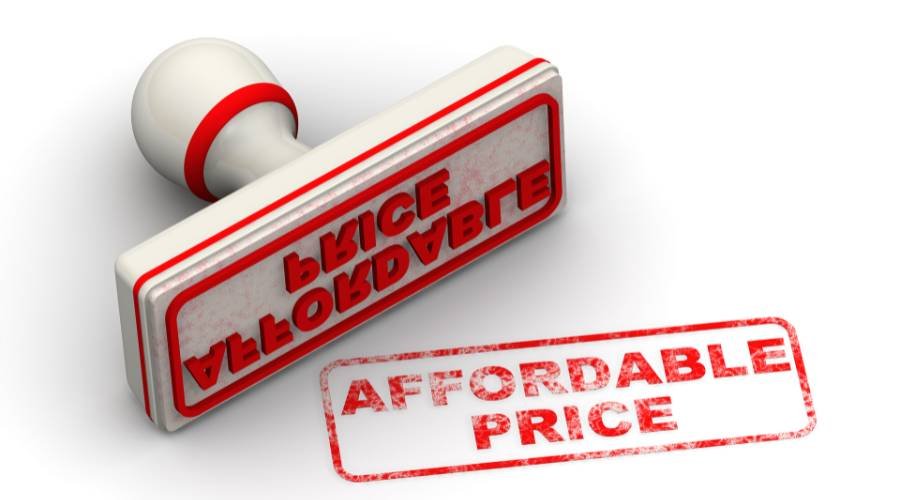Did you know Pinterest is great for new blogs to get more traffic? It’s all about the visuals and how people engage. With over 2 billion searches a month, your Pins can show up in searches and bring visitors to your site. By using smart Pinterest marketing, you can attract more visitors than ever before.
This guide will show you how to succeed on Pinterest. We’ll cover how to make your Pinterest account and boards better. Plus, we’ll teach you how to create eye-catching Pins and find the right keywords. You’ll learn how to make your visual content work harder to bring in more traffic.
Key Takeaways
- Pinterest remains a top platform for brand-new blogs to increase traffic
- Pinterest’s visual appeal and high engagement rates contribute to driving significant traffic to new blogs
- Using keywords in Pins and boards is essential for increasing visibility on Pinterest as it functions as a search engine
- Creating multiple Pins for the same blog post can enhance traffic by reaching a broader audience
- Utilizing emotional-based words in PIN titles can improve click rates

What is Pinterest and Why it Matters for Bloggers
Pinterest is not like other social media sites. It’s a visual discovery app that works like a search engine. This makes it a great place for bloggers to send people to their websites. In fact, about 61% of the traffic to a fitness blog — 7Sigma Physiques — comes from Pinterest.
Pinterest as a Search Engine
Pinterest has over 433 million users, making it a key tool for marketers. Unlike other social media, where users scroll, Pinterest users search for specific things. This makes Pinterest a great way for bloggers to reach more people and send them to their sites.
Advantages of Using Pinterest for Bloggers
- Pinterest users have a high-income demographic, with 27% earning $30,000-74,999 per year and 41% earning more than $75,000.
- 47% of Pinterest users make purchase decisions on the platform, compared to 15% on Facebook and 11% on Instagram.
- Pinterest is 80% more viral and 3 times more effective at generating leads than Twitter.
- Pins on Pinterest drive more inbound links due to each pin including a link, and user engagement is notably high, increasing the visibility of pins.
By understanding how Pinterest works and its benefits for bloggers, you can use it to increase your traffic. You’ll also reach a highly engaged audience.
Getting Started with Pinterest Marketing
Pinterest is a great place for bloggers and small businesses to get more website traffic. The first thing to do is set up an optimized Pinterest account. Use the right keywords in your profile and board names to match your blog’s topics.
Creating an Optimized Pinterest Account
Make your Pinterest account look good and informative. Use a great profile picture and a bio that shows your expertise. Add keywords that your audience might search for to help them find you.
Setting Up Boards for Your Blog Content
Create boards for your blog content on Pinterest. Organize them by topic and use keywords in the titles and descriptions. This helps users find your content and Pinterest understand your account better.
By setting up an optimized Pinterest account and boards that match your blog, you’ll get more traffic. Remember, keep your content consistent and high-quality to succeed on Pinterest.
Ecommerce websiteandPinterest marketingcan boost your online presence and increase leads and sales.
Keyword Research for Pinterest
Keyword research is key to driving traffic from Pinterest. Pinterest is a visual search engine, so your keyword strategy must be different. Let’s see how Pinterest keyword research can help make your content more visible.
Start by using the Pinterest search bar to find keywords. Pinterest suggests long-tail keywords that are more specific. These insights show what your audience is searching for.
Also, check out the Explore page on Pinterest. It shows popular content in your field. By looking at your competitors’ keywords, you can find ways to improve your pins and boards.
For more detailed research, use the Pinterest Ads keyword tool. It gives data on search volume for industry-specific keywords. This helps you pick the best terms for your pin titles and descriptions.
“Incorporating the right keywords into your content is essential for improving its visibility and discoverability on Pinterest.”
Don’t overdo it with keywords on Pinterest. Use 2-3 primary keywords per pin naturally. This way, you’ll rank better without making your pins hard to read.
By using Pinterest keyword research and understanding how Pinterest searches, you can attract more traffic. Stay tuned for more tips on making your Pinterest presence stronger.
Optimizing Your Pins for Maximum Visibility
To make sure your optimized Pinterest pins get seen by the right people, start by adding your target Pinterest keywords to your pin titles and descriptions. This helps Pinterest’s algorithm find your pins when people search for things like what you offer.
Incorporating Keywords in Pin Titles and Descriptions
Remember, Pinterest looks at the text on your pins. So, putting Pinterest keywords on the image itself can also help. Plus, adding relevant Pinterest hashtags to your pin descriptions can make your pins easier to find. By optimizing your pins, you’ll have a better chance of showing up in searches for what your blog is about.
Pinterest marketing expert Archana Haarnack says focusing on optimizing your Pinterest content is crucial. Since Pinterest is more like a search engine, making your pins better can really help. Verifying your website on Pinterest gives you valuable analytics to see how your pins are doing and improve your strategy.
Being consistent with your Pinterest posts is also important. Posting often shows the algorithm you’re active, which can lead to more visibility and engagement. Using eye-catching visuals and adding the right keywords for Pinterest SEO can also help people find your content.
Board Optimization for Pinterest
Optimizing your Pinterest boards is as important as optimizing your pins for blog traffic. By making boards well-structured and keyword-rich, we help users find and engage with our content. This makes it easier for people to see what we have to offer.
Pinterest looks at the content of each pin on a board to decide what to show next. So, it’s key to add pins that fit the board’s theme. Pinterest also likes to see different types of pins, like static, video, and Idea Pins. Idea Pins are especially favored by their algorithm.
The title of our Pinterest boards is crucial for Pinterest to know what the board is about. We should use clear, simple language that matches the board’s content. Pinning often makes our boards look fresh to Pinterest, which can get more people to see our content.
- Categorize boards into sections to help users find what they need quickly.
- Pin unique content to personal boards, as group boards are less favored by Pinterest.
- Keep some boards secret to keep our content organized for followers.
- Reorder boards to show the most relevant seasonal content, which can bring in a lot of traffic.
- Make custom board covers to make our Pinterest profile look better and easier to navigate.
- Pin new content to the most relevant board to connect with older pins, helping the algorithm understand our content better and reach the right audience.
By using these Pinterest board optimization tips, we can make our blog content more visible and engaging on Pinterest. This can lead to more traffic to our website.

Creating Curiosity and Engagement with Pin Titles and Images
Making our Pinterest pin titles catchy and our images eye-catching is key. We should aim for titles that grab users’ attention and make them want to click. This way, we can draw more people to our content.
For example, instead of saying “Healthy Foods That Make You Gain Weight,” we could say “Foods You Think Are Healthy but Actually Make You Gain Weight.” This title makes users curious and encourages them to dive into our content. Also, our images should be unique and stand out from others. Trying different colors, layouts, and designs can make our pins pop in feeds and boost Pinterest engagement.
Using long-tailed keywords in our titles can also help us get noticed more. Adding words like “expert,” “epic,” “fun,” “essential,” “affordable,” and “cheap” can make our titles more appealing.
By sparking curiosity and using attractive images, we can make our Pinterest pin titles and Pinterest pin images work better. This will drive more traffic and engagement to our content.
The Power of Pinterest Marketing
As bloggers, we know how crucial it is to keep our websites visited. Pinterest is a great tool for this, with over 2 billion searches every month. It’s a visual search engine, so our content can be found by people looking for what we offer. This is a big plus compared to other social media where our posts might get lost.
By making and improving our pins, we can reach a lot of people. These users often have more money to spend, which is great for our blog’s products or services.
Pinterest is a big help for many websites, bringing in more visits, engagement, and sales. It also has tools like Pinterest Analytics to help us see how our content is doing. This lets us make our Pinterest marketing even better.
| Pinterest Marketing Benefits | Value |
|---|---|
| Increased website traffic | Pinterest drives significant referral traffic to websites |
| Higher engagement | Pinterest users are highly engaged, with 85% starting new projects on the platform |
| Improved brand visibility | Pinterest allows businesses to reach a vast audience and increase brand awareness |
| Enhanced sales and conversions | More than half of all Pinterest users consider the platform a shopping destination |
Using Pinterest marketing can really help our blogs. We can get more visitors, more engagement, better brand visibility, and more sales. As we keep working on our Pinterest strategy and improving our content, we can make our blogs even more successful.
Pinterest Best Practices
To get the most out of Pinterest, it’s key to follow their guidelines. Pinning regularly is better than posting a lot at once. Pinterest suggests adding new pins over time to attract more people.
It’s also smart to mix your own pins with others in your field. This adds value for your followers.
Pinning Frequency and Quality
Pinterest says to post 5-10 new pins daily to stay active. But, quality is more important than how many you post. Engaging with others’ content is crucial.
Actions like repinning, commenting, and saving content are important. Pinterest values engagement over going viral. Focus on being relevant and engaging for lasting success.
Utilizing the Pinterest Native Scheduler
Using Pinterest’s native scheduler can make pinning easier. It lets you share pins automatically. This saves time and keeps your content flowing without manual effort.
Automating your pins helps you stay consistent and reach more people. It’s a great way to maintain a strong presence on Pinterest.
| Pinterest Best Practices | Recommendations |
|---|---|
| Pinning Frequency | Post 5-10 fresh pins per day |
| Pinning Quality | Focus on engagement through repinning, responding to comments, and creating high-quality content |
| Scheduler | Utilize the Pinterest native scheduler to automate your pinning strategy |
| Aspect Ratio | Use vertical images with a 2:3 aspect ratio for standard pins, 1:1 for square images, and specific ratios for other formats |
| Content Posting | Publish content on a weekly basis to maximize visibility for users seeking inspiration |
By sticking to these Pinterest best practices, you can boost your visibility and engagement. This can lead to more traffic and potential customers for your blog or website.
Writing Pinterest-Focused Content
As bloggers, making our pins and boards better is key. But, we also need to write content just for Pinterest. Knowing what topics and formats work well there helps us make content that gets seen, shared, and brings more visitors to our sites.
Creating content full of visuals, like listicles, how-to guides, or infographics, is a smart move. These types of Pinterest-focused content appeal to Pinterest’s love for visuals and easy-to-read info. We can also use popular search terms and keywords on Pinterest in our blog titles and descriptions. This makes our blog content for Pinterest easier to find.
By matching our content to what Pinterest users like, we can make our pins work harder. Here are some tips to help:
- Try to make fresh Idea Pins every week to keep your audience interested and maybe even attract new followers.
- Keep up with the latest Pinterest trends to make content that more people will find interesting.
- Use text overlays on Idea Pins to help them show up in searches; picking the right keywords can help more people see them.
- Tag your content with relevant topics before you publish it to reach people who are actually interested.
- Make sure to fill out all the details on your boards, like names, descriptions, and categories, to help them show up in searches.
By focusing on making high-quality, Pinterest-optimized content, we can use the platform to bring more traffic and engagement to our blogs. The main thing is to give value to our audience and match what Pinterest users like.
Conclusion
Pinterest is a great tool for bloggers and small business owners in Australia. It helps drive traffic to their websites. By understanding how Pinterest works, we can reach over 2 billion monthly searches.
By using keywords and optimizing our pins and boards, we can attract more visitors. Creating content just for Pinterest helps our blog posts reach our target audience. This brings valuable traffic back to our sites.
Adding Pinterest marketing to our content strategy can change the game. It boosts our visibility and engagement with Australian audiences. Pinterest’s unique features, like visually appealing boards and pins, help us stand out online.
As we dive deeper into Pinterest marketing, keeping up with trends and best practices is key. Posting fresh, engaging content and using analytics tools helps us improve our strategies. This leads to more traffic, brand awareness, and online sales.
The Pinterest marketing conclusion is clear. Pinterest is a valuable asset that can take our businesses to new heights.
FAQ
What is Pinterest and why is it important for bloggers?
Pinterest is a visual discovery platform that works like a search engine. It’s a big chance for bloggers to get more website traffic. Pinterest users are always looking for new content. Plus, it has a lot of high-income users who make buying decisions there.
How can I create an optimized Pinterest account?
To make your Pinterest account better, use the right keywords in your profile and board names. Set up boards for your blog posts. This makes it easy for users to find and like your content.
How can I do keyword research for Pinterest?
Keyword research is key on Pinterest. Use the search bar, Explore page, and Pinterest Ads tool to find top terms. Then, add these keywords to your pin titles, descriptions, and board names.
How can I optimize my pins for maximum visibility?
To make your pins more visible, add your target keywords to titles and descriptions. Use relevant hashtags and consider adding keywords to your images. This helps Pinterest’s algorithm match your pins with the right searches.
How can I optimize my Pinterest boards?
To optimize your boards, use keywords in your titles and descriptions. Create boards that match your blog’s topics and themes. This makes it easy for users to find and explore your content.
How can I create pin titles and images that drive engagement?
To grab attention, make your pin titles curious and inviting. Your images should be eye-catching and unique. Try different colors, layouts, and designs to stand out.
What are some best practices for Pinterest marketing?
For effective Pinterest marketing, post regularly and mix your own content with others. Use the Pinterest scheduler to automate your posts. This keeps your content flowing without manual effort.
How can I create blog content that is specifically tailored for Pinterest?
To tailor your blog for Pinterest, focus on visual, informative content like listicles and infographics. Research popular Pinterest keywords and use them in your titles and descriptions.




